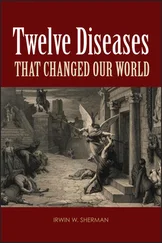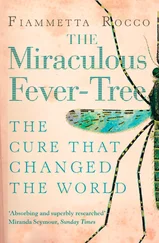Francis Anstie - Neuralgia and the Diseases that Resemble it
Здесь есть возможность читать онлайн «Francis Anstie - Neuralgia and the Diseases that Resemble it» — ознакомительный отрывок электронной книги совершенно бесплатно, а после прочтения отрывка купить полную версию. В некоторых случаях можно слушать аудио, скачать через торрент в формате fb2 и присутствует краткое содержание. Жанр: foreign_antique, foreign_prose, на английском языке. Описание произведения, (предисловие) а так же отзывы посетителей доступны на портале библиотеки ЛибКат.
- Название:Neuralgia and the Diseases that Resemble it
- Автор:
- Жанр:
- Год:неизвестен
- ISBN:нет данных
- Рейтинг книги:5 / 5. Голосов: 1
-
Избранное:Добавить в избранное
- Отзывы:
-
Ваша оценка:
- 100
- 1
- 2
- 3
- 4
- 5
Neuralgia and the Diseases that Resemble it: краткое содержание, описание и аннотация
Предлагаем к чтению аннотацию, описание, краткое содержание или предисловие (зависит от того, что написал сам автор книги «Neuralgia and the Diseases that Resemble it»). Если вы не нашли необходимую информацию о книге — напишите в комментариях, мы постараемся отыскать её.
Neuralgia and the Diseases that Resemble it — читать онлайн ознакомительный отрывок
Ниже представлен текст книги, разбитый по страницам. Система сохранения места последней прочитанной страницы, позволяет с удобством читать онлайн бесплатно книгу «Neuralgia and the Diseases that Resemble it», без необходимости каждый раз заново искать на чём Вы остановились. Поставьте закладку, и сможете в любой момент перейти на страницу, на которой закончили чтение.
Интервал:
Закладка:
The description of neuralgia from injury would be incomplete without some special words on a variety of this affection which has only very recently been described with that fulness which it deserves. I refer to the pains which are produced by gunshot injuries of nerves, received in battle, of which no sufficient account had been given until the publication of the experience of Messrs. Mitchell, Moorehouse, and Keen, in the late American civil war. 3 3 "Gunshot Wounds and other Injuries to Nerves." Philadelphia: Lippincott & Co., 1864.
From the interesting treatise of the above-named writers it appears that not merely is neuralgia of an ordinary type a frequent after-consequence of wounds, but that certain special pains are not unfrequently produced. In the more ordinary instances, pain is of the darting, or of the aching kind; and all writers on military surgery, who have recorded their experience of the results of wounds received in battle, have spoken of affections of this kind, for the most part singularly severe and obstinate, and in not a few recorded instances clinging to the patient during the remainder of his life. These pains may at times leave the sufferer, but they infallibly recur when from any cause his health is depressed, and it is an especially common thing for them to be evoked in full severity under the influence of exposure to cold, and particularly to damp cold.
But the American writers introduce us to another and more terrible neuralgia which is a, fortunately, less frequent result of serious injuries to nerves. They speak of it as a burning pain of intense and often intolerable severity; they believe that it seldom if ever originates at the moment of the injury, but rather at some time during the healing process; and it is especially noteworthy that it is sometimes felt not in the nerve actually wounded, but in some other nerve with which it has connections. After it has lasted a certain time, an exquisite tenderness of the skin is developed, and a peculiar physical change of skin-tissue occurs; it becomes thin, smooth, and glossy. It is a remarkable fact that these burning pains which are so definitely linked with a nutrition-change of skin are never felt in the trunk, and rarely in the arm or thigh, not often in the forearm or leg, but commonly in the foot or hand; and the nutrition changes of the skin are generally observed on the palm of the hand, the palmar surface of the fingers, or the dorsum of the foot; rarely on the sole of the foot or the back of the hand. It is very interesting to remark that these skin-lesions correspond very nearly, not only to those observed in the cases of nerve-injury reported by Mr. Paget, 4 4 Med. Times and Gazette , March 26, 1864.
in which actual neuralgia was present (though the kind of pain is not exactly specified), but also very nearly with the nutritive changes observed by Mr. Jonathan Hutchinson in a number of cases of surgical injuries of nerves. 5 5 "London Hosp. Reports," 1866.
The tendency of neuralgic pain accompanied by nutritive lesions of the skin and nails to seat itself in the hands and feet will be hereafter noted in connection with the subject of the pains of locomotor ataxy and of those produced by profound mercurial poisoning. And it will be seen in the section on Pathology, that very important conclusions are suggested by the coincidence.
Joined with the burning pains, and the altered skin-nutrition, in the cases of gunshot injury of nerves which we are considering, there is nearly always a marked alteration in the temperature of the parts, either in one direction or the other. In the great majority of instances of ordinary neuralgia after wounds, this alteration is a very considerable reduction of the temperature of the parts supplied by the painful nerves; a change which corresponds with what appears in the vast majority of all cases of division of sensitive nerves, whether pain be set up or not. But, in all examples of the burning pain after injury, Messrs. Mitchell, Moorehouse, and Keen found the temperature of the painful parts notably elevated.
It would appear that there is no form of neuralgia more dreadful, and scarcely any so hopeless, as this burning pain coming on as a sequel to severe nerve injuries. It exercises a profoundly depressing effect upon the whole nervous tone; the most robust men become timid and broken down, and their condition is compared by the American writers to that of hysterical women.
There is another peculiar nutritive affection, first recognized as an occasional consequence of nerve injuries by Messrs. Mitchell, Moorehouse, and Keen, namely, an inflammation of joints, and, although we have no concern here with this symptom, it will be referred to hereafter as throwing interesting light on certain questions of pathology. Certain lesions of secretion will also be specially referred to under the heading of Diagnosis.
II. Neuralgias of Intra-nervous Origin. – As regards the constitutional conditions with which the several varieties of neuralgia that arise independently of external violence, or disease of extra-nervous tissues, are respectively allied, the following preliminary subdivisions may be made:
1. Neuralgias of malarious origin.
2. Neuralgias of the period of bodily development.
3. Neuralgias of the middle period of life.
4. Neuralgias of the period of bodily decay.
5. Neuralgias associated with anæmia and mal-nutrition.
1. Neuralgias of malarious origin were formerly far more prevalent than they are at present, within the sphere of the English practitioner of medicine; with the general decline of malarial fevers, consequent on improved drainage and cultivation of lands, they have become constantly more scarce. The districts in which they still are found to prevail with any frequency are carefully specified in the interesting report of Dr. Whitley to the Medical Officer of the Privy Council, in the Blue-Book for 1863.
Of course, however, there are a considerable number of persons continually returning to England from countries where malarious diseases are common; and these often bear about with them the effects of paludal poisoning which occasionally exhibits itself in the form of neuralgia. Till very lately, however, I had not happened to come across such cases, although at one time and another I have seen and treated a good many persons returned from India and Africa, whence I judge that neuralgia with this special history is less common than many seem to think. In former times, on the contrary, malarioid neuralgias were so common that they forced themselves on the notice of every practitioner. The term "brow-ague," to this day applied by many medical men to every variety of supra-orbital neuralgia, is a relic of the older experience on this point, as is also the very common mistake of expecting all neuralgic affections to present a distinctly rhythmic recurrence of symptoms.
In the year 1864 I published the statement 6 6 "Stimulants and Narcotics," Macmillan, 1854, p. 86.
that, "in a fair sprinkling" of the cases of neuralgia which present themselves in hospital out-patient rooms, ague-poisoning may be suspected; but I was then speaking rather from hearsay than from my own experience, which, in fact, had yielded no clear cases of this sort of neuralgia, and was till just recently unable to reckon up more than two undoubted and one doubtful case of the affection, in all of which the fifth cranial nerve was unattacked. The periodicity in one of the genuine cases was regular tertian, in the other regular quotidian. A semi-algide condition always ushered in the attacks; but this was gradually exchanged, as the pain continued, for a condition in which the pulse was rapid and locomotive, but compressible, and the strength was further depressed. In both these cases there was unilateral flushing of the face, and congestion of the conjunctiva, to a slight degree, during the attack of pain. The pain became duller and more diffused contemporaneously with the lowering of arterial pressure; and, after the disappearance of active pain, moderate tenderness over a considerable tract round the course of the painful nerves remain for some time. There was no distinct development of painful points in the situations described by Valleix; but it should be remarked that the cases were rapidly cured with quinine, which very probably accounts for this circumstance.
Интервал:
Закладка:
Похожие книги на «Neuralgia and the Diseases that Resemble it»
Представляем Вашему вниманию похожие книги на «Neuralgia and the Diseases that Resemble it» списком для выбора. Мы отобрали схожую по названию и смыслу литературу в надежде предоставить читателям больше вариантов отыскать новые, интересные, ещё непрочитанные произведения.
Обсуждение, отзывы о книге «Neuralgia and the Diseases that Resemble it» и просто собственные мнения читателей. Оставьте ваши комментарии, напишите, что Вы думаете о произведении, его смысле или главных героях. Укажите что конкретно понравилось, а что нет, и почему Вы так считаете.












